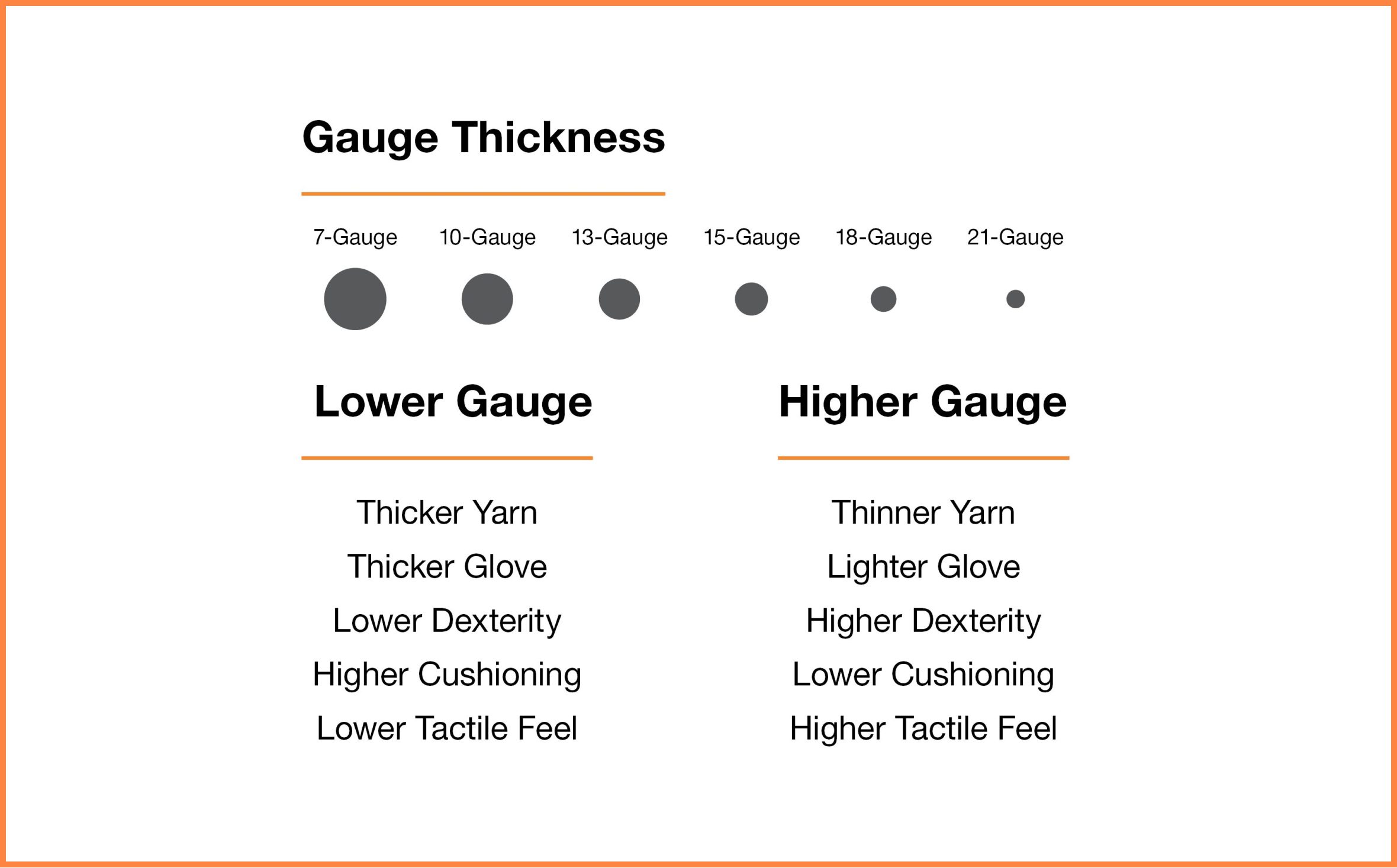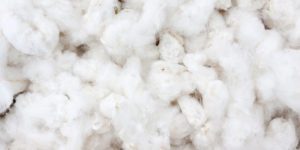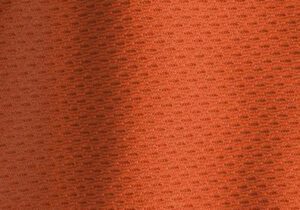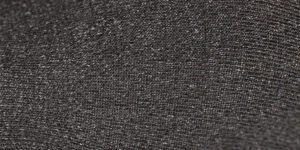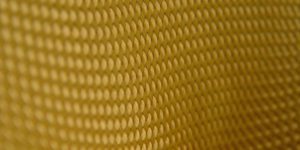
Glove 101
Glove Shell Materials
The glove shell, or more specifically, the glove shell material, is considered the foundation of all safety gloves. It is the core frame that is built upon by incorporating additives and other treatments to further enhance glove performance and comfort.
Glove shell materials for most glove types (leather, string knit, and mechanics) can essentially be divided into two major categories: leather and knitted yarn.
For information on materials used for other gloves (chemical and disposable) see Glove Additives and Treatments | Palm Coatings.
Glove 101
Glove Shell Materials
The glove shell, or more specifically, the glove shell material, is considered the foundation of all safety gloves. It is the core frame that is built upon by incorporating additives and other treatments to further enhance glove performance and comfort.
Glove shell materials for most glove types (leather, string knit, and mechanics) can essentially be divided into two major categories: leather and knitted yarn.
For information on materials used for other gloves (chemical and disposable) see Glove Additives and Treatments | Palm Coatings.
LEATHER
Grain or split leather? Gloves made with cow, sheep, goat, or another hide? How do you choose between all these options?
The wide variety of options available for leather gloves doesn’t always make it easy to choose from. Understanding key attributes and differences between each type can help you make an educated decision.

Leather offers high durability and abrasion resistance and nominal cut and puncture resistance. But not all leather grains are created equal. When choosing leather gloves for specific tasks, it is important to pay attention to what side of the skin is used (also known as the leather finish).
LEATHER FINISHES
In animals that have a thick hide like cow and buffalo, leather can be separated between the upper “top grain” and the lower “split” leather.
It is also important to note that leather harvesting is a byproduct of food production. And the quality of leather directly impacts the cost of the gloves.
Cow leather is the most common type of leather used for safety gloves and offers high-abrasion resistance. Goat is a close second, due to its soft and supple feel and high dexterity. Other leather types offer varying levels of durability, dexterity, and abrasion resistance.
GRAIN
SPLIT (OR SUEDE)
learn more about each type of leather
COWHIDE
Cowhide is economical, thick, and rugged, offering high durability and abrasion resistance. Although it can be stiff at first, cowhide breaks in easily.
GOATSKIN
Pigskin is more rugged and durable than goatskin, but also less supple. Pigskin leather stays soft after getting wet due to a high lanoline content. Like cowhide, it is very affordable. Like goatskin, pigskin cannot be split into split leather.
PIG SKIN
Pigskin is more rugged and durable than goatskin, but also less supple. Pigskin leather stays soft after getting wet due to a high lanoline content. Like cowhide, it is very affordable. Like goatskin, pigskin cannot be split into split leather.
SHEEPSKIN
Sheepskin is extremely soft, supple, and dexterous, with a feel that is velvety smooth. It is incredibly versatile and works for both cool and hot climates. Sheepskin gloves are great for comfort but sacrifice on durability and abrasion resistance.
DEERSKIN
Deerskin is also extremely soft, supple, and dexterous, but less durable when compared to sheepskin. Like sheepskin, deerskin gloves are best for comfort, but sacrifice durability and abrasion resistance.
ELK SKIN
Elk skin carries a lot of the qualities of deerskin, but with a lot more durability.
BUFFALO
Buffalo hide is very thick and rigid, but not very supple. It offers high abrasion resistance making it durable, rugged, and strong.
HORSEHIDE
Horsehide is tough and durable. It is more rugged than cow, but the least supple of all the leathers. Horsehide is also one of the more expensive leathers to use for gloves.
WHAT IS THE IDEAL LEATHER?
The key tradeoff between the different types of leather is durability and dexterity—how rugged the hide is versus how supple it is. And choosing the right safety gloves depends on the task you’re using the gloves for. For instance, tasks that require a greater sense of motion or dexterity, elk skin, deerskin, or goatskin are the ideal choice of leather. For tasks where there is a high risk of arc flash, a more rugged material like cow split, horse, or buffalo will offer the necessary protection.
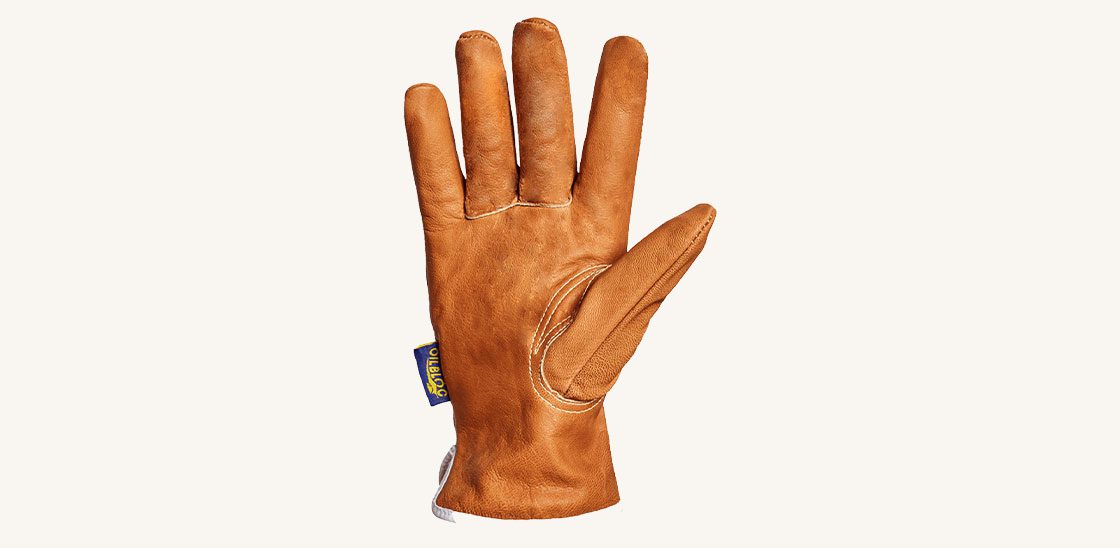
Liners are usually sewn into leather gloves to offer additional protection from hazards like cut, puncture, heat, cold, and other additives and treatments can also be integrated to enhance glove performance such as oil and water resistance, back of hand protection, and finger caps, among others. More details on this are covered in Glove Additives and Treatments | Glove Treatments.
KNITTED YARN
First, let’s take a quick behind the scenes look at how yarns are engineered. This will help understand how different gloves materials blend together to enhance glove performance.

All knitted gloves start off as fibers, whether natural or synthetic. These fibers are then either combed, melted, or engineered into yarns. From there, various yarns are spun together using a yarn spinning machine onto a spool (cylindrical device on which thread can be wound). The spools of yarn are then connected to another machine that twists and knits the gloves.
Primary yarn materials used as the base in manufacturing knit safety gloves
A breakdown of the features, attributes, and limits of each type is summarized in the table below.
COTTON
NYLON AND POLYESTER
HPPE
Features and Attributes
• High-strength synthetic fiber
• Softer and cooler to wear
• More dexterous and flexible than para-aramid and meta-aramid
• Higher tactile feel compared to para-aramid and meta-aramid
Limitations
• Thermoplastic: melts under heat
PARA-ARAMID
Features and Attributes
• High-strength synthetic fiber
• Natural flame and heat resistance
Limitations
• Dense fibers compared to HPPE is rougher and warmer to wear
• Less dexterous and flexible than HPPE
• Lower tactile feel compared to HPPE
META-ARAMID
• High-strength synthetic fibers
• Strong natural flame and heat resistance when compared to para-aramid
Limitations
• Offers less mechanical protection then para-aramid and HPPE
• Dense fibers compared to HPPE is rougher and warmer to wear
• Less dexterous and flexible than HPPE
• Lower tactile feel compared to HPPE
MOST GLOVES ARE NOT MADE WITH SINGLE MATERIAL!
A combination of the primary yarn materials mentioned above or additional materials such as steel, fiberglass, and others are usually blended into the base yarn for comfort, dexterity, and higher mechanical protection. For instance, while HPPE, para-aramid, and meta-aramid offer some (low) degree of mechanical protection on their own, we at Superior Glove create our own proprietary blends (HPPE based TenActivTM, para-aramid based ParaActivTM, and meta-aramid based MetaActivTM) to achieve better comfort, dexterity, and enhanced mechanical protection against hazards like cut, puncture, abrasion, heat, and flame, among others.
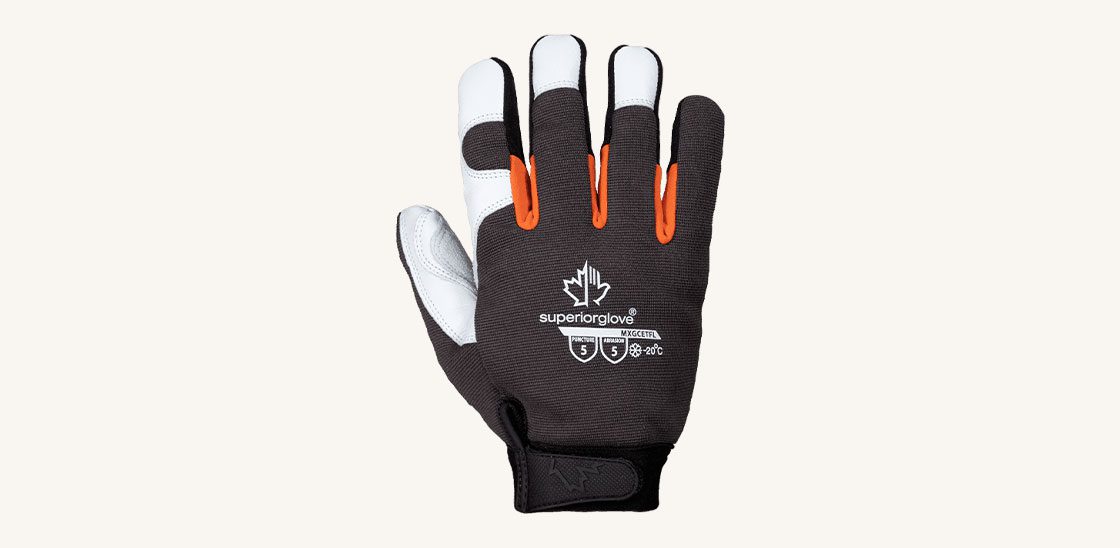
Other additives and treatments can also be integrated to enhance glove performance such as palm coating for better grip or liners for waterproofing or insulation, to name a few. However, these additional materials do not make up the majority of the glove and are added to complement the protection workers need for specific hazards. More details on this are covered in Glove Additives and Treatments.
GLOVE GAUGE AND ITS IMPACT ON GLOVE PERFORMANCE
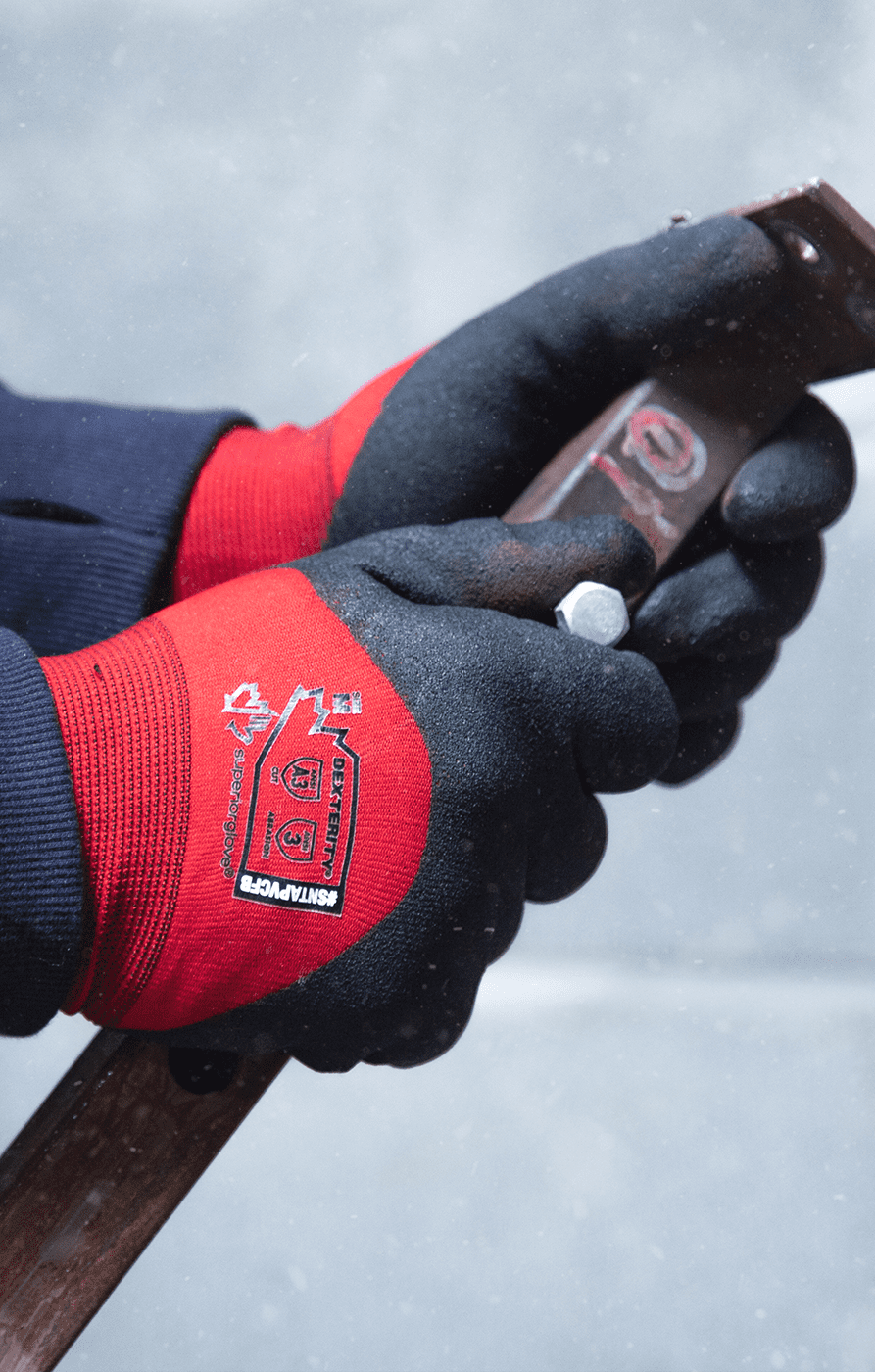
When choosing machine knit gloves, you’ve probably come across the glove’s gauge. Manufacturers typically offer gloves that range from 7-gauge to 21-gauge. But what exactly does that mean? Let’s take a closer look.
Gauge is defined as the number of stitches included in each inch of yarn. As the number of stitches increase, so does the gauge. Note that although gauge refers to the yarn, it’s common to hear it called glove gauge. This has the same meaning and is a shorthand way of referring to the thickness or thinness of a glove.
You might think that lower-gauge equals lighter and higher-gauge equals heavier—but in fact, the opposite is true. Lower-gauge gloves are thicker and less dexterous, while higher-gauge gloves are lighter and offer more dexterity.
However, no one gauge is better than the other. It all depends on the tasks and hazards for which they’re needed. For instance, if comparing a 7-gauge glove to a 21-gauge glove, the 7-gauge will be less dexterous, because it’s less flexible and has a lower tactile feel. If fine motor skill is needed, this is an issue. But, if the task requires heavy lifting that includes sharp and abrasive objects, then workers might prefer a thicker glove as it offers increased cushioning and durability. Refer to the chart below for a quick reference of glove gauge versus glove performance.
GLOVE GAUGE AND ITS IMPACT ON GLOVE PERFORMANCE
When choosing machine knit gloves, you’ve probably come across the glove’s gauge. Manufacturers typically offer gloves that range from 7-gauge to 21-gauge. But what exactly does that mean? Let’s take a closer look.
Gauge is defined as the number of stitches included in each inch of yarn. As the number of stitches increase, so does the gauge. Note that although gauge refers to the yarn, it’s common to hear it called glove gauge. This has the same meaning and is a shorthand way of referring to the thickness or thinness of a glove.
You might think that lower-gauge equals lighter and higher-gauge equals heavier—but in fact, the opposite is true. Lower-gauge gloves are thicker and less dexterous, while higher-gauge gloves are lighter and offer more dexterity.
However, no one gauge is better than the other. It all depends on the tasks and hazards for which they’re needed. For instance, if comparing a 7-gauge glove to a 21-gauge glove, the 7-gauge will be less dexterous, because it’s less flexible and has a lower tactile feel. If fine motor skill is needed, this is an issue. But, if the task requires heavy lifting that includes sharp and abrasive objects, then workers might prefer a thicker glove as it offers increased cushioning and durability. Refer to the chart below for a quick reference of glove gauge versus glove performance.

Refer to the chart below for a quick reference of glove gauge versus glove performance:
